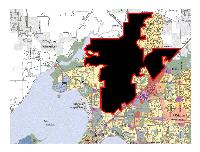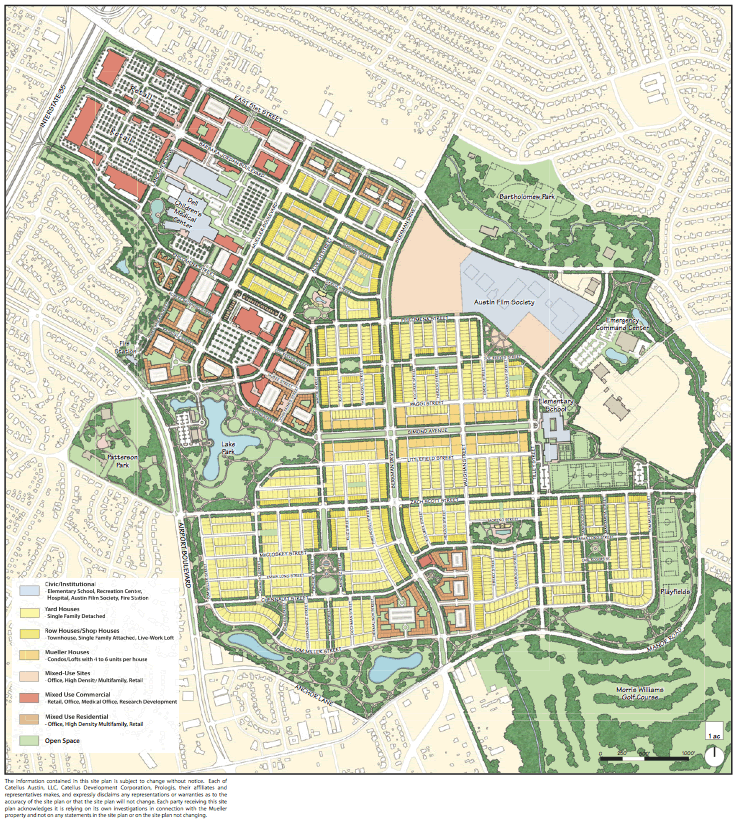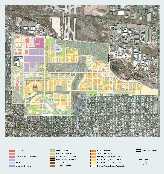 nomadisonairport.org
nomadisonairport.org nomadisonairport.org
nomadisonairport.org| Madison
has an opportunity to create affordable homes. |
|
| Madison
and Dane County
are making plans
for the future. Plans for making Madison a better place to live. Plans
to reduce suburban sprawl. But something is missing. The city's Comprehensive
Plan removes thousands of acres in Madison from future residential
growth where no one is allowed to live. This area could provide
affordable homes to 40,000 more city residents who would inject their
vitality into our community. Why is this area considered uninhabitable? The Dane County Regional Airport. It has created an area unsuitable for people to live. Instead of the benefits of additional city residents, Madison gets an airport ghetto. While surrounding communities grow, the county airport stops residential growth in Madison. The picture at right shows Madison's airport ghetto. Click on the image to see the full extent of this area. It doesn't need to be this way. Madison and Dane County can follow the lead of other cities like Austin, Texas, by relocating the county airport outside the city and replacing it with a lively, urban area - a Smart Growth showplace. Joel Hirschhorn, author of "Sprawl Kills - How Blandburbs Steal Your Time, Health and Money," and former UW professor and Madison resident, says: "The concept of carefully examining relocating the Dane County airport to free up considerable land for close-in development that would reduce sprawl around Madison is a fine illustration of "smart growth" thinking. City and county officials should be encouraged by thoughtful citizens and business leaders to pursue analysis of this option." |
Madison's Airport Ghetto |
| What
have
other communties done? |
|
|
Austin,
Texas relocated their city airport and the former Peter
Mueller
Municipal Airport has been
redeveloped into a "new
mixed-use urban village
in the heart of Austin. Mueller is a model for responsible planning and
sustainability. In every way, Mueller breaks the mold and offers a
variety of homes, shops, services, schools and places to work and play
in a setting that's vibrant, pleasing and downright friendly."
By mid-2007, the project's developer will build 4,600 homes, including single-family and multifamily units, half for owners and half for renters, priced at $130,000 to $550,000. Learn more by visiting the web site: www.muelleraustin.com/ Click on the image to the right and see Austin's plan for development of the former Mueller airport site. |
Austin's
Urban Village |
| Denver,
Colorado
relocated their city
airport and redeveloped the 4,700 acre Stapleton International Airport
site into "the
nation’s
largest
urban development, is an urban tapestry
of homes, shops, offices, parks, and schools in a walkable community of
classic city architecture." According to the Sierra Club, the conversion of Stapleton is a model of smart growth development. Only 10 minutes from downtown Denver, the mixed-use project will add 12,000 housing units, including detached houses, town houses and lofts by 2020. Read the Sierra Club comments on the redevelopment of Stapleton, or visit the web site: www.stapletondenver.com Click on the image to the right and see Denver's plan for redevelopment of the former Stapleton airport site. |
Denver's
Walkable Community  |
Other examples of airport redevelopment into residential housing include the Vancouver, Washington; San Bernardino, California; and Burlington, Connecticut. Read about these projects in the March 12, 2006 article in the New York Times -- End of the Runway: New Homes Are Rising. |
|
| How would you
redevelop the county airport site
in
Madison? |
|
Here
is a sampling of redevelopment ideas from elsewhere in the country:
|
 |
 |
|
 |
|
 |
|
| What's at stake by leaving the county airport in Madison | |
The county airport is an economic burden to Madison
residents.
|
|
The
county airport is an environmental
burden to Madison residents.
|
Watch "Planes over Madison" on YouTube |
| What
do readers have to say? |
|
|
"I find
myself agreeing with your
entire argument."
"I wish that instead of investing a pile of money in the new facility Dane Co. would have relocated the airport ten or twenty years ago. Please send me a bumper sticker or two and some more to share." "You're absolutely correct! Madison needs more affordable housing, not an airport ghetto." "Yes, it is time to stop wasting the city's eastside while the rest of the county grows." "I never realized how much Madison residents sacrifice to support the county airport." "What a shining example of Smart Growth we could provide by replacing the airport ghetto with homes and neighborhoods." "Where are the "Smart Growth" leaders?" "Such a pro-Madison idea. The sounds of people would be far better than the noise of airplanes." |
|
| Frequently
asked questions? |
|
|
How would we pay for relocation of
the county airport?
The Austin and Denver airports were relocated using airport revenue bonds at no cost to taxpayers. The cost of relocation can also be offset by the difference in land values between the current and new location, airport revenues and federal support. It is no secret that while the rest of county government struggles with tight budgets, the county airport has had unlimited funds for new construction projects. Where should the airport be moved? A thorough review of possible sites is needed. One potential location is northeast of Sun Praire along Highway 151. Wouldn't relocating the airport create more sprawl than leaving it in Madison? While a relocated airport will consume county land, this will be far less than the land and resources consumed by those 40,000 or more residents that will live and commute from sprawling subdivisions outside the city. Growth at the new airport location can be limited by using the airport's and county's control over zoning. Currently the airport's control over zoning is ironically used to stop residential growth within Madison, where it is needed the most. |
|
| Show
your support and request a
bumper sticker. |
|
|
Send your name and address to: bumper_sticker@[remove this
space]nomadisonairport.org
|
|
| What
next? |
|
|
Let your
city and county representatives know its time to start planning a
better future for Madison and Dane County. We need a study of the costs
and benefits of relocating the county airport out of
Madison.
Write County Executive Kathy Falk and let her know the Dane County smart growth plan and her Attain Dane plan forgot to evaluate the impacts of keeping the county airport in Madison. This omission will create, not discourage, more Dane County sprawl. Write Mayor Dave Cieslewicz and tell him the city Comprehensive Plan is out of balance and needs to more aggressively create housing, especially affordable housing, within Madison. His plan forgot to evaluate the impacts of keeping the county airport in Madison. We need homes, not an airport ghetto. It's time for him to return to his sprawl fighting roots and start looking out for Madison residents. Email us with your thoughts and ideas at: info@[remove this space]nomadisonairport.org |
|
